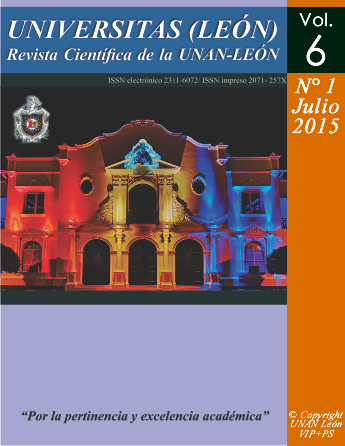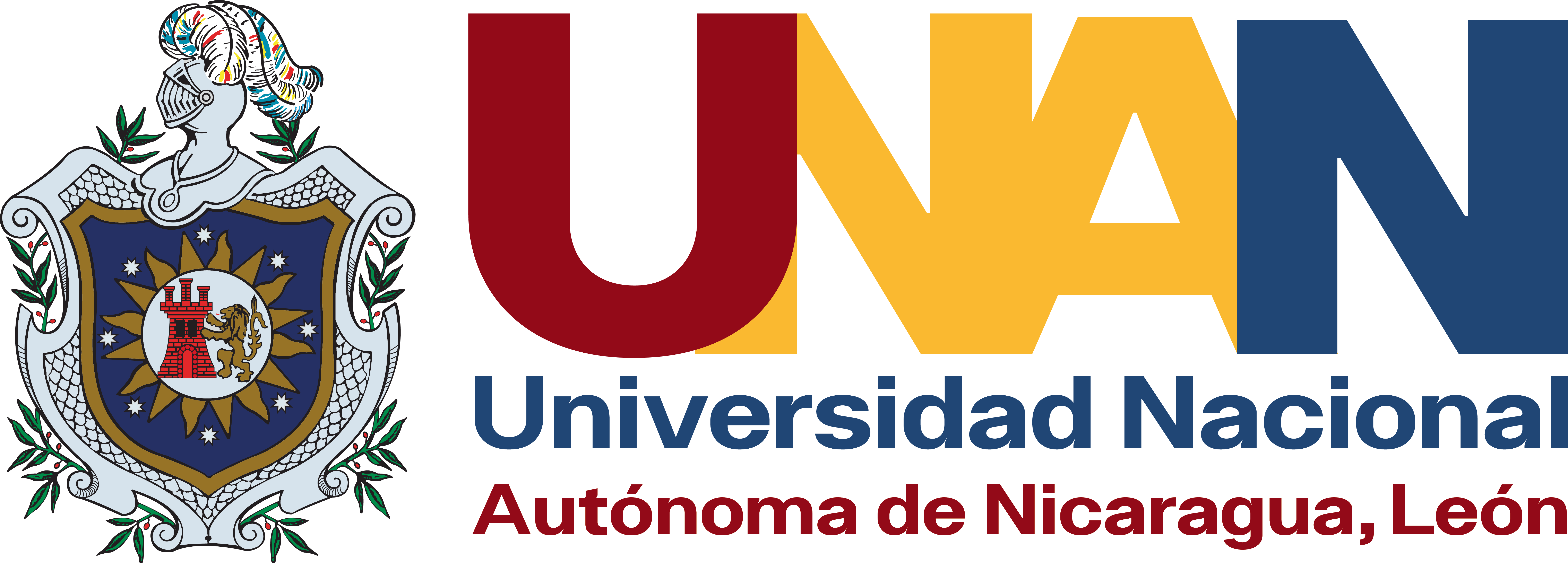Growth behavior of juvenile tilapia oreochromis niloticus, using commercial feed: for tilapia at 28% vs. for shrimp at 30%
DOI:
https://doi.org/10.5377/universitas.v6i1.13700Keywords:
Tilapia feeding, Tilapia farming, Tilapia fatteningAbstract
Target. Evaluate the behavior of the growth of juvenile tilapia Oreochromis niloticus, using commercial feed: for tilapia at 28% vs. For shrimp at 30%. Materials and methods. To determine which treatment obtained the highest growth, physical-chemical factors (Dissolved Oxygen, Temperature) and population parameters (Accumulated Growth, Survival and Feed Conversion Factor) were taken. Collecting these data for 28 days where Tilapia Oreochromis niloticus had an initial weight of 17.58gr in both treatments. Results. According to the results obtained in the experiment, the treatment with commercial feed for tilapia obtained a final growth of 30.03gr, while the commercial treatment for shrimp registered a final growth of 33.33gr. Conclution. According to the results obtained in the experiment, it has been concluded that the Physical and Chemical Factors did not affect growth, that statistically there is no significant difference (P<0.05) between both treatments, however at the end of the experiment the Treatment No. 2 (commercial feed for shrimp at 30%) resulted in more growth than Treatment No. 1 (commercial feed for tilapia at 28%).
Downloads
References
Bravo, C. Chalén J & Bocca F. 2003. Análisis económico - financiero de la producción y comercialización de la tilapia roja como una opción para la exportación". Ecuador. 11pp. Consultado el 01 de Julio del 2014. Disponible en: http://www.dspace.espol.edu.ec/bitstream/123456789/533/1/975.pdf
Espejo, C. &Torres, E. 2001. Cultivo de las tilapias roja (Oreochromis sp) y plateada (Oreochromis niloticus). Fundamen tos de Acuicultura Continental, Serie de fundamentos No1, 2ª Ed., Instituto Nacional de Pesca y acuicultura de la Republica de Colombia, 283-298pp. Consultado el 05 de Junio del 2014. Disponible en: http://biblioteca.agronet.gov.co:8080/jspui/bitstream/123456789/3634/1/051.1.pdf
García, A., Tume J., & Juárez V. 2011. Determinación de los parámetros de crecimiento de la Tilapia Nilótica (Orechromis niloticus) en un estanque revestido con geomembrana y abastecido con agua de subsuelo. Consulta do en Junio del 2014. Disponible en: http://www.uap.edu.pe/Investigaciones/Esp/Revista_15-02_Esp_05.pdf https://doi.org/10.21503/cyd.v15i2.1127
Hurtado, N. 2005. Tilapia, La alternativa social y económica del tercer milenio. Revista Aquatic. Lima- Perú. 127pp. Consultado el 24 de Mayo del 2014. Disponible en: http://www.revistaaquatic.com/documentos/docs/nh_tilapia 3milenio.pdf
Mohammad, T. 2008. Preliminary study on growth, feed conversion and production In non-improved and improved strains of the Nile tilapia Oreochromis niloticus. Aquaculture, Fisheries and Marine Environment Depart ment, Kuwait Institute for Scientific Research, P.O. Box 1638, Salmiyah 22017, Kuwait.13pp. Consulta- do el 01 de Julio del 2014. Disponible en: http://eco-library.theplanetfixer.org/docs/aquaculture/fish-by-species/tila pias/preliminary-observation-on-salinity-tolerance-of-three-sizes-of-the-gift-and-non-improved-strains-of-the-ni le-tilapia.pdf
Popma, T. J. y B. W. Green. 1990. Sex Rerversal of Tilapia in Eartherm Ponds International Center of Aquaculture, Auburm University, Alabama, USA. 15pp. Consultado el 05 de Junio del 14. Disponible en: http://pdacrsp.oregonstate.edu/pubs/technical/14tchhtml/2/2b/2b4/2b4.html.
Ramos, F, Triminio. S, Meyer. D & Barrientos. A. 2006. Determinación de los costos del cultivo de tilapia a pequeña y mediana escala. Proyecto USAID RED - RED - Tilapia. Zamorano - Honduras. 26pp. Consultado 24 Mayo del 2014. Disponible en: http://pdacrsp.oregonstate.edu/pubs/featured_titles/Determinacion_Meyer007. pdf
Ruiz, A. 2006. Evaluación de un cultivo semi-Intensivo de tilapia (Oreochromis niloticus) en tanques circulares con aguas termales. Revista Electrónica de Veterinaria REDVET. España. 12pp. Consultado el 20 de Junio del 2014. Disponible en: http://www.veterinaria.org/revistas/redvet/n111106.html
Villalta, A, J & Marín A, G. 2011. Comparación del rendimiento del cultivo de tilapia del Nilo (Oreochromis niloticus) utilizando machos reversados versus machos genéticamente mejorados (supermachos) criados en sistema intensivo. Tesis para optar el Título de Ingeniero agrónomo. El Salvador-San Miguel: Universidad del salvador. 133pp. Consultado el 26 de Mayo del 2014. Disponible en: http://168.243.33.153/infolib/tesis/50107585.pdf
Downloads
Published
How to Cite
Issue
Section
License
Copyright (c) 2015 UNIVERSITAS (LEÓN): SCIENTIFIC JOURNAL OF THE UNAN-LEÓN

This work is licensed under a Creative Commons Attribution-NonCommercial-ShareAlike 4.0 International License.
Copyright © 2025 Universitas (León), Revista Cientifíca de la UNAN-León. Academic Direction. Research Department. Publication and Scientific Event Unit.










